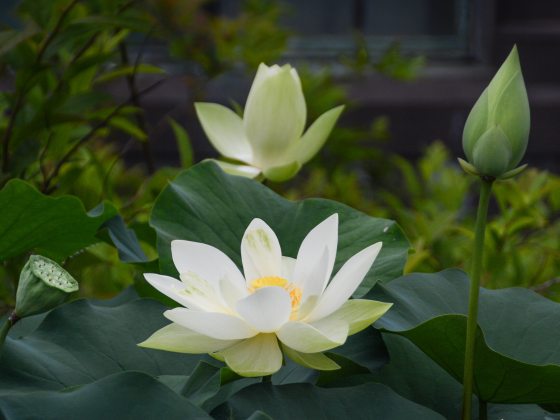
Featured Bloom
Hybrid White Lotus
Known for their beauty, the highly ornamental flowers of lotus are extremely fragrant and symbolic in many cultures. Emerging from the murky waters into the bright clear day is how Nelumbo nucifera, also referred to as the sacred lotus, first became a symbol of enlightenment. The fact that the sacred lotus is able to emerge without any trace of the muddy depths from which it was born is how it became associated with purity. Further elevating its sacred status, it’s reputed that Buddha rose up from the heart of a lotus bud more than 2,500 years ago.
See what’s in bloom … and enjoy the beauty of our Gardens.
-
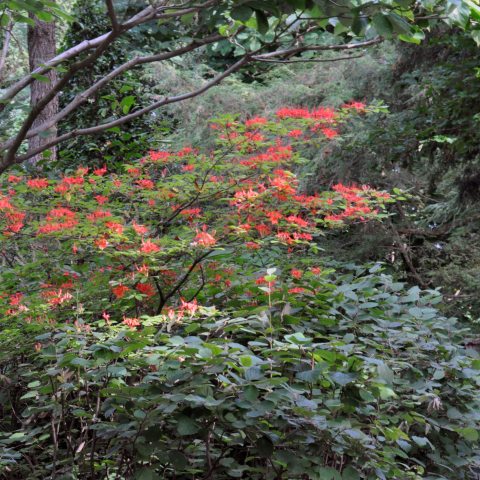
Plumleaved Azalea
Rhododendron prunifoliumRhododendron prunifolium, commonly known as plumleaf azalea, is a rare and striking deciduous azalea native to a small region in the southeastern United States, particularly Georgia and Alabama. Unlike most azaleas, it blooms in mid to late summer, producing clusters of vibrant orange to reddish flowers. These blooms are especially attractive to hummingbirds, which serve as its primary pollinator, drawn by the flower’s bright color and tubular shape. The species name prunifolium refers to its leaves, which resemble those of a plum tree. As a member of the heath family (Ericaceae), it prefers acidic, well-drained soils and partial shade. Its late-season bloom, specialized pollination, and limited native range make it both a garden standout and a conservation priority!
-
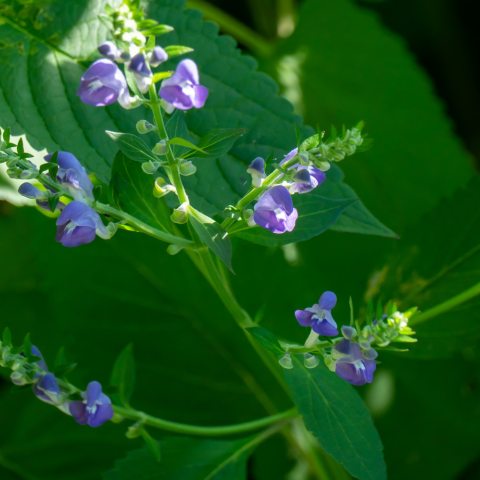
Downy Skullcap
Scutellaria incanaScutellaria incana, commonly known as hoary skullcap, is a native perennial found in open woodlands and prairies of the central and eastern United States. It features upright spikes of soft blue to violet flowers that bloom in mid-to-late summer, providing important nectar for bees and other pollinators. It's named “skullcap” because the shape of its small, helmet-like flowers resemble a close-fitting cap. The plant's gray-green, slightly hairy leaves help it tolerate dry conditions, making it a resilient choice for native plant gardens. With its quiet beauty and ecological value, Scutellaria incana is a great addition to low-maintenance landscapes. Deer-resistant
-
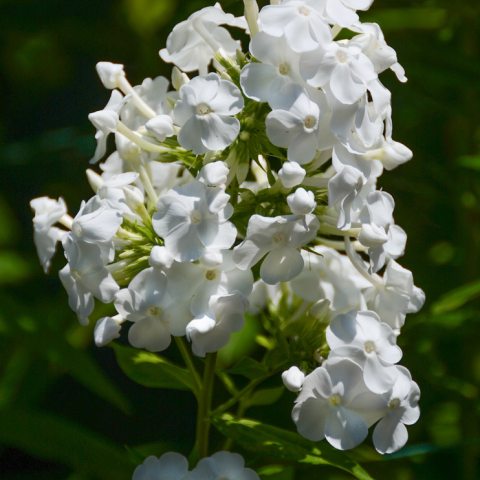
Perennial Phlox
Phlox paniculata ′David′Phlox paniculata is a perennial species native to the United States and grows in open woodlands, thickets and meadows. 'David' is a white-flowering selection which grows to a height of 25 to 40 inches, in partial shade or full sun, and blooms from late June until early September. Phlox paniculata 'David' was discovered in 1987 by F.M. Mooberry, respected native plant horticulturalist and former Horticultural Coordinator at the Brandywine Conservancy in Chadds Ford, PA. Recognizing its horticultural potential, she named the cultivar 'David' in honor of her husband. This selection has since become renowned for its mildew resistance (a common issue with phlox), and has been widely propagated and celebrated in gardens across the United States.
-
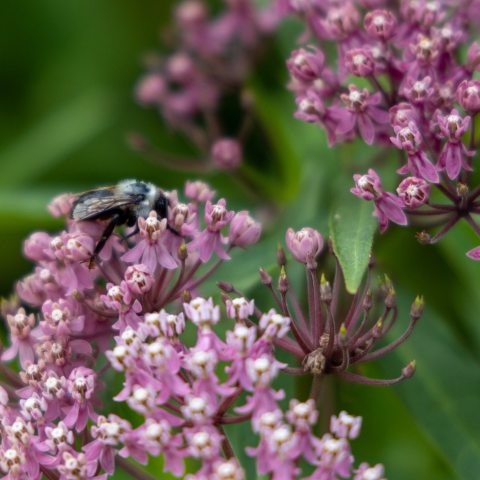
Swamp Milkweed
Asclepias incarnataAnother native milkweed featured in the Meadow is the fragrant swamp milkweed. Like the other milkweeds, it is a favorite food source for monarch butterfly larva and has seeds that are attached to silky fibers that act like parachutes when released from their pods. But unlike the others, this species does well in moist to wet sites and can even tolerate heavy clay soil.
-
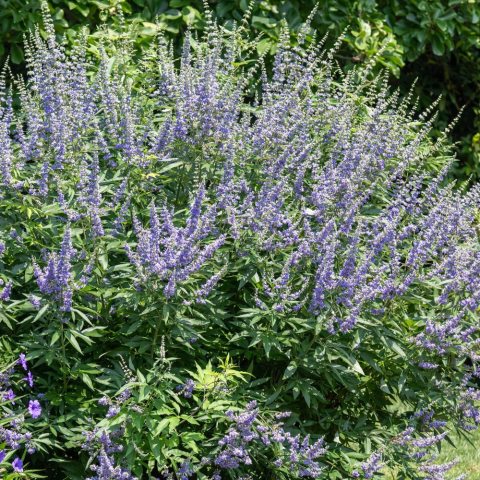
Chaste-tree
Vitex agnus-castus 'Shoal Creek'The chaste tree (Vitex agnus-castus) is a deciduous shrub or small tree in the mint family (Lamiaceae), known for its aromatic, gray-green leaves and showy spikes of lavender to violet flowers that bloom from summer into fall. Native to the Mediterranean region, it’s widely grown in warm climates for its ornamental value and its strong appeal to pollinators like bees and butterflies. Despite the name, the "chaste" tree has a long history of use in herbal medicine, once believed to promote celibacy. Today, it's appreciated more for its drought tolerance, graceful form, and extended bloom period in the landscape.
-
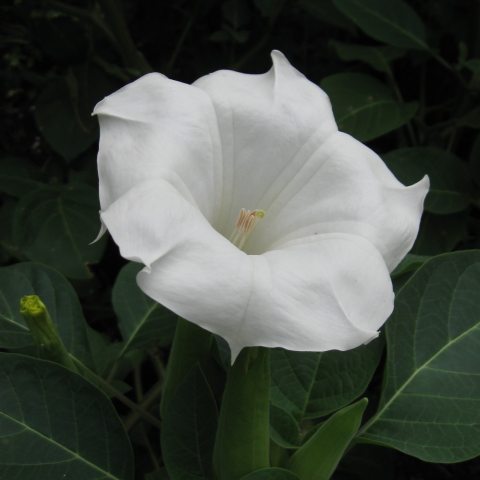
Downy-thorn-apple
Datura metel ′Belle Blanche′This striking ornamental plant flaunts large, trumpet-shaped, pure white flowers that unfurl in the evening and release a sweet, intoxicating fragrance. Native to tropical Asia but beloved worldwide, 'Belle Blanche' thrives in warm climates and can grow as a showy shrub or small tree. But beware, every part of this plant is toxic, so admire it with your eyes, Its stunning blooms and bold presence make it a favorite for moon gardens and nighttime pollinators.
-
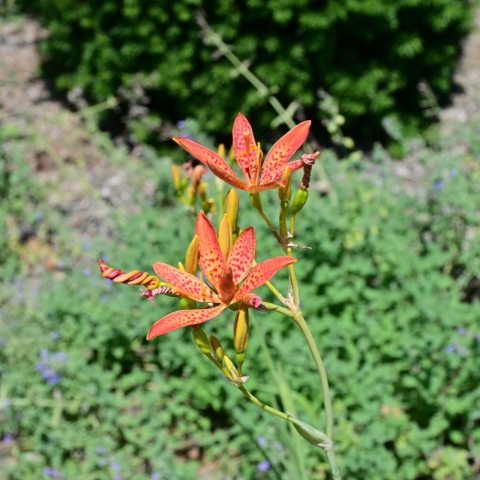
Blackberry-lily
Iris domesticaBlackberry-lily is not a lily but an iris that is native to large parts of eastern and southern Asia. It can grow to four feet tall with iris-like fanned foliage, topped by orange flowers with red spots in summer. In the fall, the seed pods open to reveal shiny black seeds, giving the plant its common name.
-
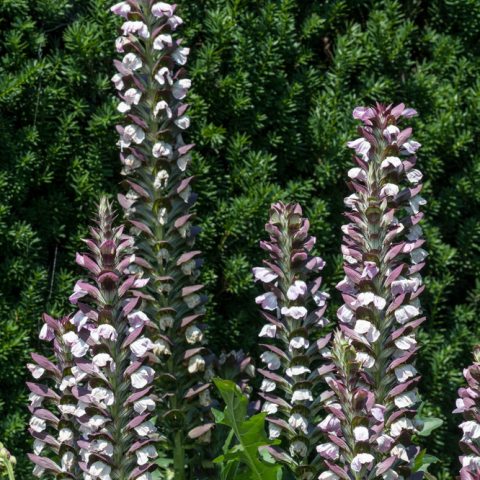
Bear's-breeches
Acanthus mollisAcanthus mollis, commonly known as bear’s breeches, is a bold, architectural perennial native to the Mediterranean region. It’s known for its large, glossy, deeply lobed leaves and tall flower spikes adorned with white and purple bracts that bloom in late spring to summer. The plant’s dramatic form has inspired design for centuries — it even served as the model for the leaf motifs on Corinthian columns in classical architecture. Acanthus mollis thrives in part shade with well-drained soil and is valued for adding a lush, sculptural quality to gardens.
-
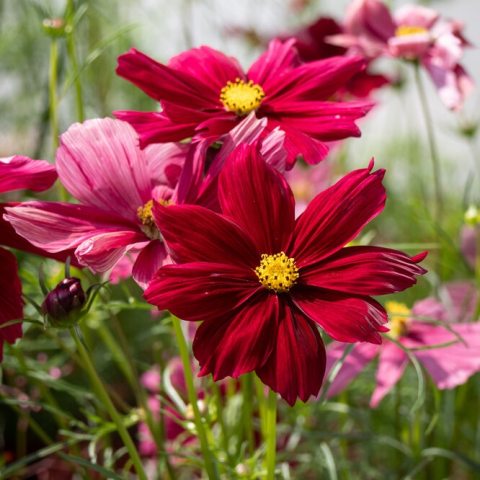
Cosmos
Cosmos bipinnatus 'Rubenza'Find a variety of Cosmos bipinnatus in bloom in West Conservatory Plaza as well!
-
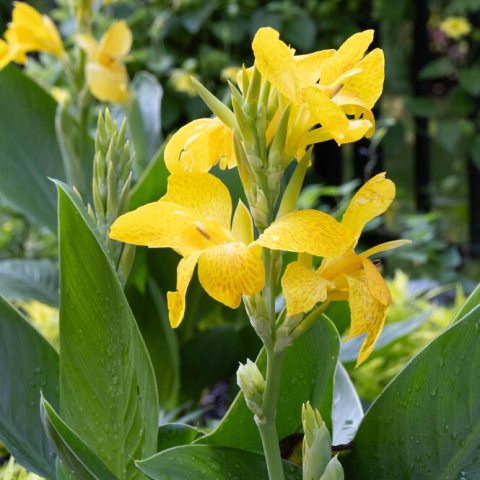
-
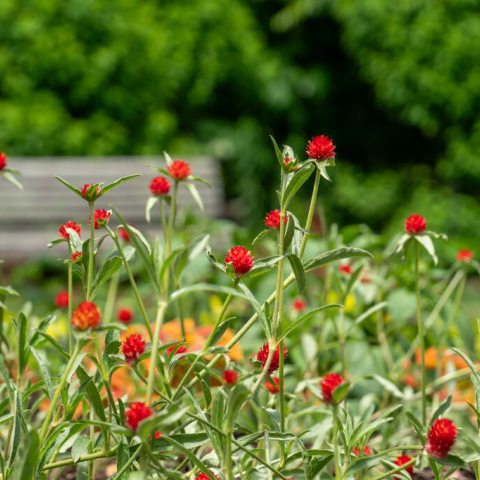
-
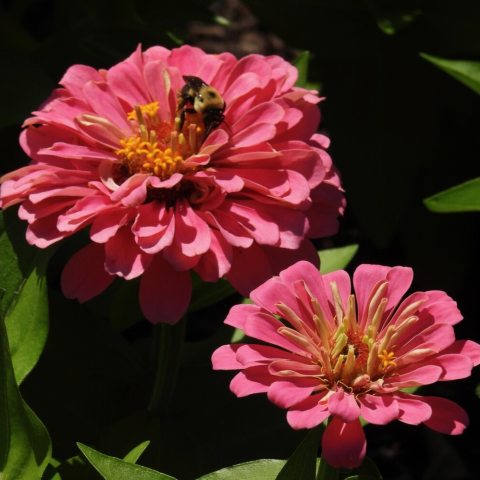
-

-
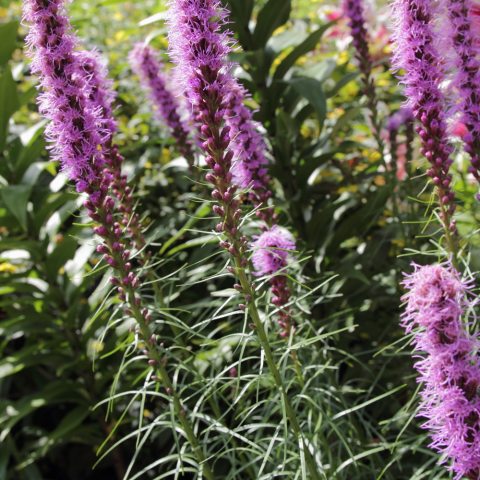
-
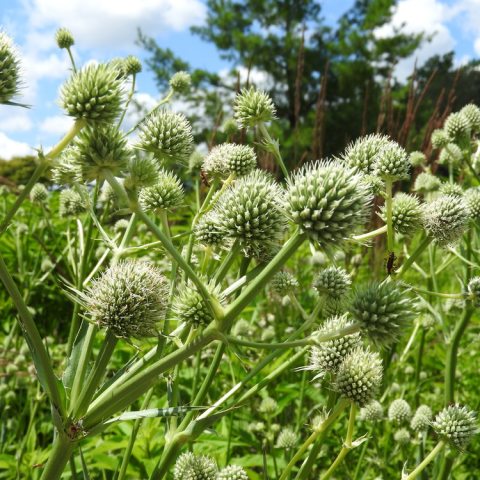
-
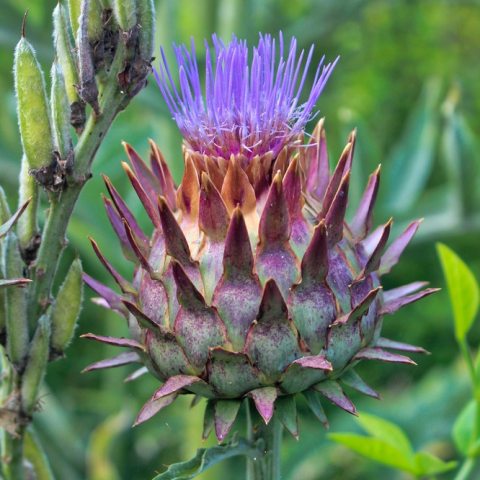
-
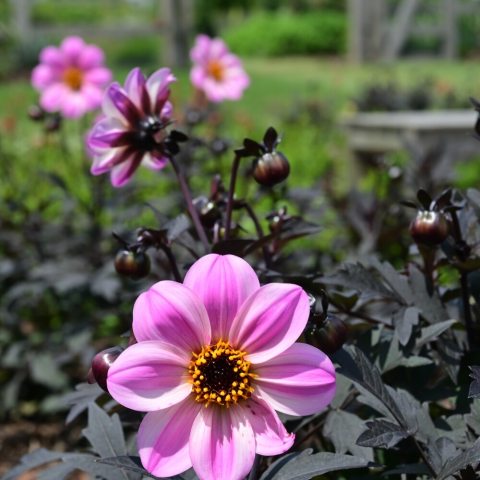
-
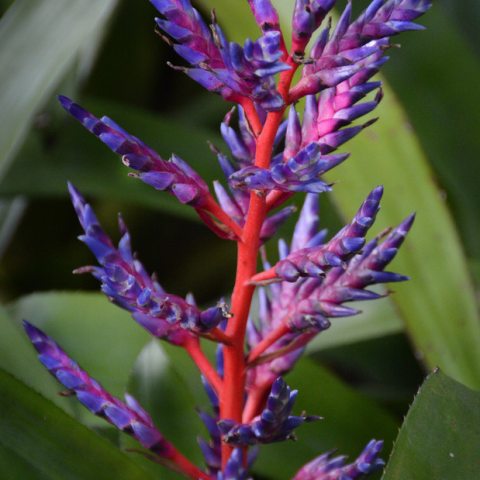
-

-
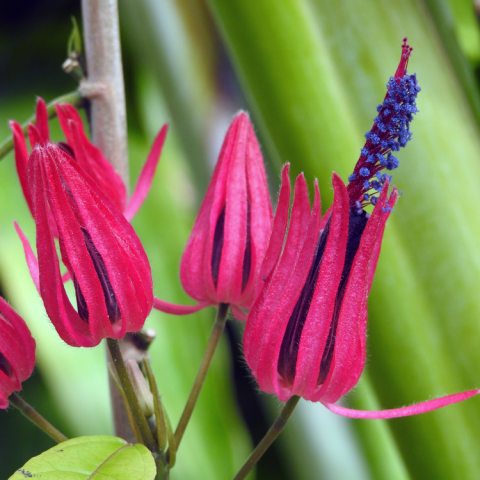
-
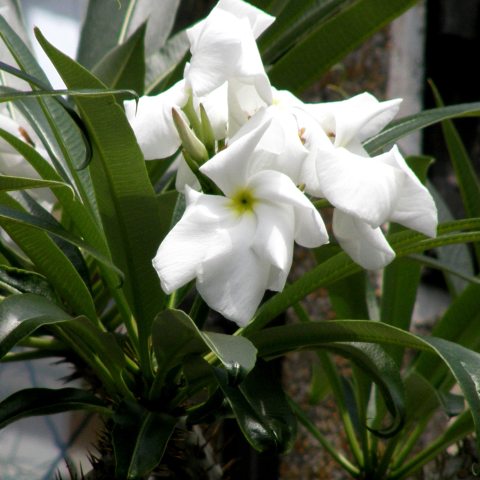
-
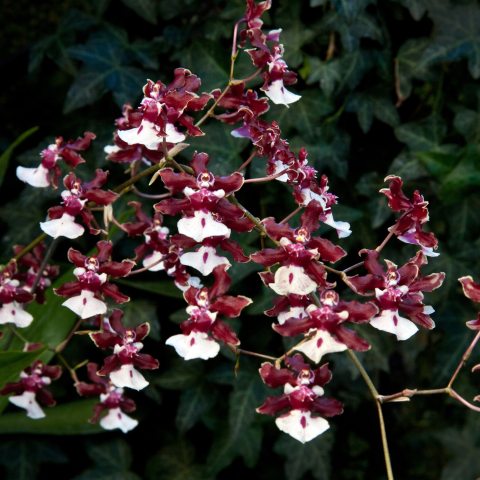
-
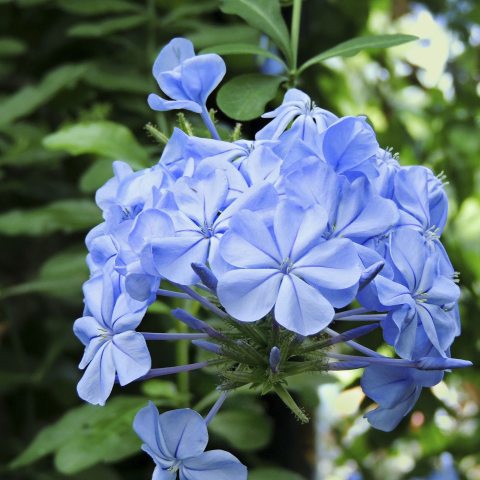
-
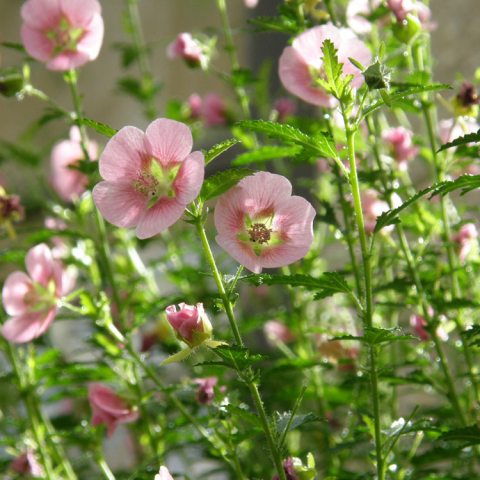
-
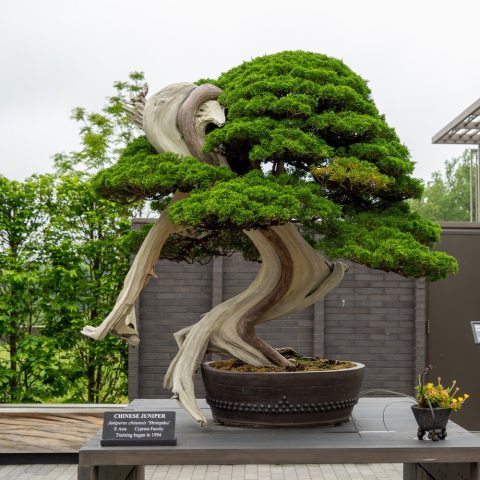
-
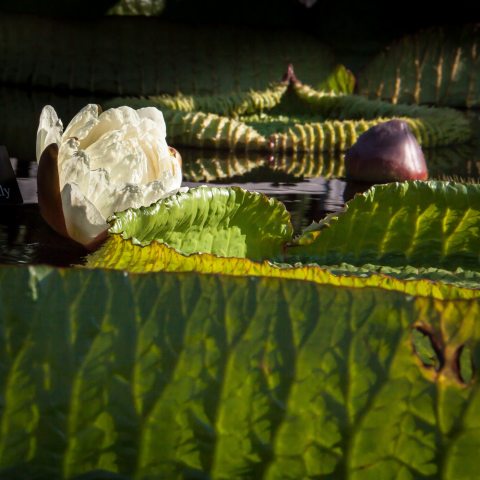
Santa Cruz Water-platter
Victoria cruzianaYoung water-platter leaves emerge from the water as a green roll of prickle and soon transform into large, floating plates with an upturned rim. Victoria platters grow at an astonishing rate. At maturity, the leaf can reach diameters of six feet and can support more than 80 pounds of evenly-distributed weight. Water-platters flower for two nights. The first night flower is white and fragrant, while the second night flower is pink.
-
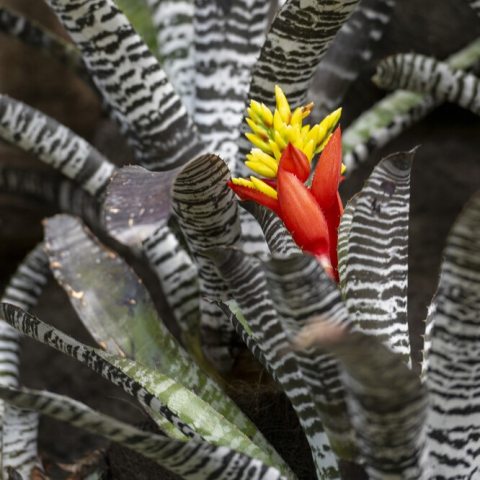
-
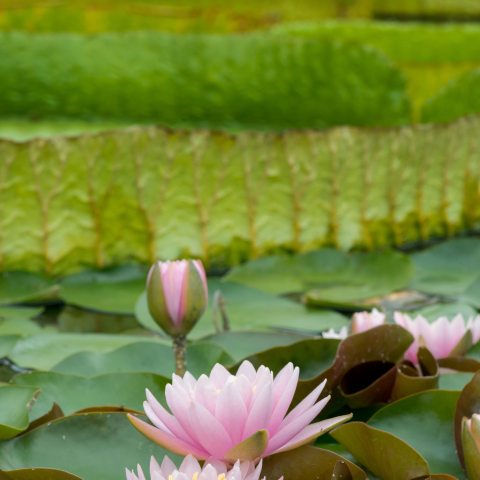
Hardy Waterlily
Nymphaea ′Odorata Luciana′Nymphaea ′Odorata Luciana′ in the Waterlily Display
-
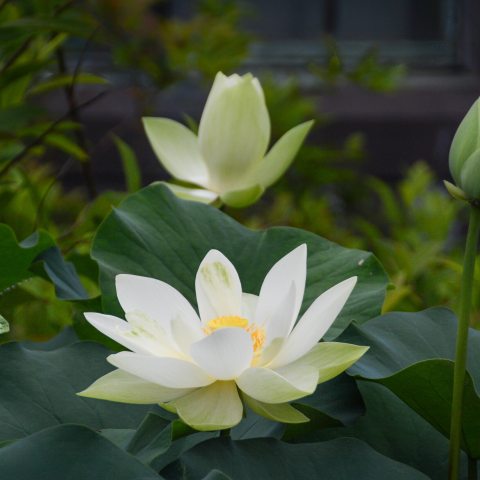
Hybrid White Lotus
Nelumbo ′Perry’s Giant Sunburst′Known for their beauty, the highly ornamental flowers of lotus are extremely fragrant and symbolic in many cultures. Emerging from the murky waters into the bright clear day is how Nelumbo nucifera, also referred to as the sacred lotus, first became a symbol of enlightenment. The fact that the sacred lotus is able to emerge without any trace of the muddy depths from which it was born is how it became associated with purity. Further elevating its sacred status, it’s reputed that Buddha rose up from the heart of a lotus bud more than 2,500 years ago.